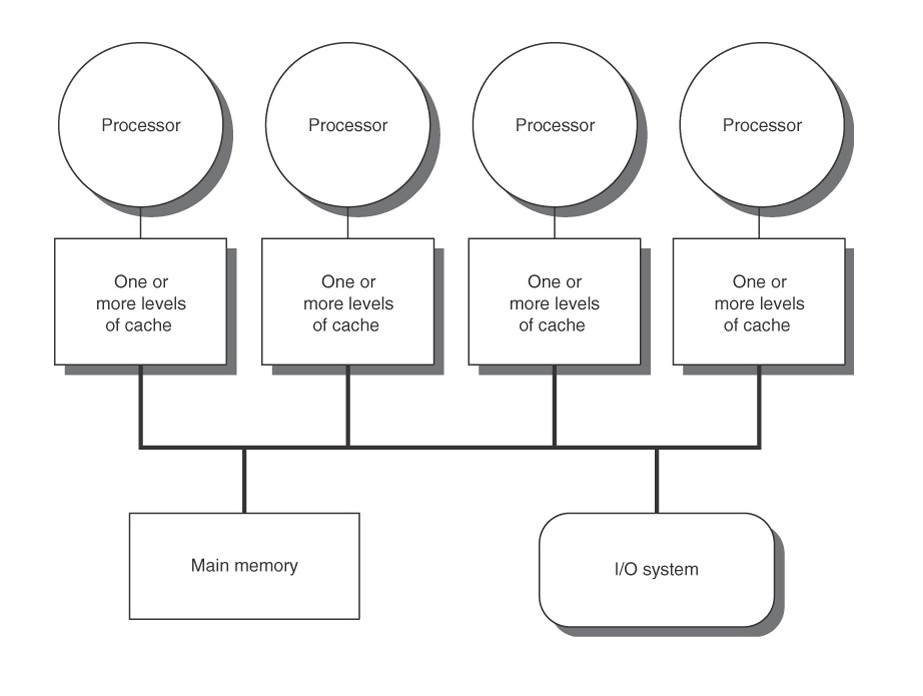CSC 456 Spring 2012/ch7 AA
Cache Coherence
Problem

In a system with a single processor (single core), maintaining cache coherency is simple and easy, but in a multiprocessor system, it is not as simple. Data can be present in any processors cache, and protocol needs to ensure that the data is same in every cache. If it cannot ensure that all the caches are the same, then it needs to flag a cache line to indicate that it is not updated.
In the figure shown here, there is a 4 processor shared memory system where each processor has its own cache. Suppose processor P1 reads memory location M1 and stores it in its local cache. Then, processor P2 also reads from M1 and stores its own local cache. Now, if P1 changes value of M1, there will be two copies of same data residing in different caches, but the one in P1's cache will be different. The problem arises hen P2 operates on M1, and uses the stale value of M1 that was stored in its cache. It is the responsibility of Cache Coherence Protocol to prevent this. Hardware support is needed to provide a coherent view of data in multiple caches. This is known as write propagation requirement.
One may think that cache write policy can provide cache coherence but it is not true. Cache write policy only controls how a change in value of cache is propagated to lower level cache or main memory. It is not responsible for propagating changes to other caches.